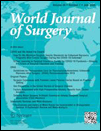Patient-Reported Outcomes and Long-Term Results of a Randomized Controlled Trial Comparing Single-Port Versus Conventional Laparoscopic Inguinal Hernia Repair
Abstract
Background
Surgical techniques for inguinal hernia repair have evolved rapidly from open methods to conventional laparoscopic totally extra-peritoneal (CTEP) and recently single-port TEP (STEP). As there is currently no randomized controlled trial (RCT) reporting long-term patient-reported outcomes between CTEP and STEP, we reviewed patients who were randomized to CTEP or STEP 5 years after surgery.
Methods
Telephone interviews were administered to patients with primary unilateral inguinal hernia recruited for the RCT comparing CTEP and STEP in 2011. The modified Body Image Questionnaire was used to measure long-term patient-reported outcomes.
Results
Forty-two out of forty-nine of the STEP group and forty-one out of fifty of the CTEP group responded to phone interviews. Median follow-up time, demographic data and clinical outcomes were comparable between both groups. The Body Image Score (5–20: 5—least dissatisfied, 20—most dissatisfied; BIS score ± SD, STEP vs. CTEP, 5.33 ± 0.90 vs. 7.17 ± 1.87, p < 0.001) and Cosmetic Score (2–20: 2—least satisfied, 20—most satisfied; CS score ± SD, STEP vs. CTEP, 19.05 ± 1.31 vs. 15.87 ± 1.57, p < 0.001) were superior in the STEP group. Similarly, self-reported scar perception (1—cannot be seen, 2—can barely be seen, 3—visible; scar perception score ± SD, STEP vs. CTEP, 1.29 ± 0.51 vs. 2.55 ± 0.64, p < 0.001) and overall experience score (1—least satisfied, 10—most satisfied; overall satisfaction score ± SD, STEP vs. CTEP, 9.57 ± 0.67 vs. 8.22 ± 0.94, p < 0.001) were superior in the STEP group.
Conclusion
Patients who underwent STEP reported superior cosmetic and satisfaction scores and comparable surgical outcomes 5 years after surgery compared to the CTEP group. STEP should be strongly considered in patients who are concerned about long-term cosmetic outcomes and should be offered if surgical expertise is available.
Trial registration NCT02302937




